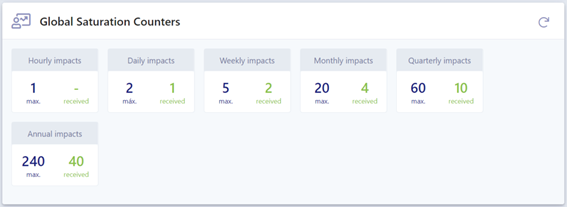Data silos hinder banks from creating tailored and meaningful experiences for their clients, since customer data is too often trapped in different platforms. Here’s how to avoid data silos and overcome fractured customer identities with Latinia.

What are information data silos?
Have you ever wondered why you are being sent marketing messages to download an application you already have installed, or to apply for a bank card you already have? Data silos are the enemy of digital transformation and the reason that even with millions of dollars spent, customer experiences remain disconnected and confusing.
Information data silos refer to isolated repositories or systems within an organization where data is stored and managed independently, often without integration or communication with other data sources.
In the context of customer information in banks, data silos arise when customer data is fragmented and scattered across different departments, systems, or geographic locations within the bank.
Data silos occur due to various factors, including:
- Organizational structure.
- Legacy systems.
- Departmental autonomy.
- Lack of data governance.
Each department or system may have its own databases, applications, or platforms, leading to the segregation of customer information.
For example, customer data may reside in separate systems for account management, loan processing, credit cards, and customer relationship management (CRM).
The Frankenstein Effect: facing the challenge of bank data silos
All banks have access to useful customer information like their assets, income, upcoming life events, and credit scores. However, since this information is not stored in one place, providing customers with the top-notch experience they deserve can be challenging.
These isolated data silos result in a disjointed and incomplete view of customer information. The data within each silo is not easily accessible or shared across the organization, hindering collaboration, decision-making, and providing a holistic understanding of the customer.
Furthermore, information data silos can lead to data duplication, inconsistencies, and inaccuracies. When different departments or systems maintain their own copies of customer data, updates or changes made in one silo may not be reflected in others. This lack of synchronization can cause confusion, errors, and ultimately impact the overall customer experience.
Banks must recognize and address information data silos to ensure a comprehensive and unified view of customer information, enabling better decision-making, personalized services, and improved customer experience.
Strategies to overcome data silos in banks
Several strategies can be implemented to overcome the challenges posed by information data silos in banks and achieve a unified view of customer information. Here are some practical approaches:
Data integration and consolidation
Banks can work towards integrating and consolidating their data sources to eliminate silos. This involves establishing a centralized data repository or data warehouse that acts as a single source of truth for customer information.
By consolidating data from various systems and departments, banks can ensure data consistency, eliminate duplication, and enable seamless data access and sharing.
Implementing a single customer view
Creating a single customer view involves integrating customer data from multiple sources to form a unified, comprehensive profile for each customer. Banks can gain a holistic understanding of their customers by linking and aggregating customer information across various touchpoints, such as transactional data, account details, interactions, and preferences.
This consolidated view enhances customer service, facilitates personalized offerings, and improves cross-selling and up-selling opportunities.
Data governance and standardization
Establishing robust data governance practices is crucial for breaking down data silos. Banks should define data standards, policies, and procedures to ensure customer information consistency, quality, and security.
Implementing data governance frameworks enables organizations to enforce data sharing protocols, establish data ownership, and maintain data integrity across systems and departments.
Cross-functional collaboration
Encouraging collaboration and communication across different departments is vital to overcoming data silos. Banks should foster a culture of cross-functional teamwork and information sharing.
This can be achieved through regular meetings, joint projects, and the use of collaborative tools and platforms that facilitate data exchange and knowledge sharing.
Cross-functional teams can work together to identify common data needs, streamline processes, and implement cohesive data management strategies.
Investing in modern data technologies
Banks should leverage modern data technologies like cloud computing, big data analytics, and artificial intelligence (AI) to break down data silos.
Cloud-based platforms provide scalability and agility, enabling seamless data integration and access across the organization. Advanced analytics and AI algorithms can uncover insights from disparate data sources, enhancing decision-making and customer intelligence.
Investing in these technologies enables banks to overcome the limitations of legacy systems and create a more interconnected and data-driven environment.
Overcoming fractured customer identities with Latinia
Banks are often structured around vertical products such as loans, cards, and insurance. However, customers are frequently offered a combination of these products, especially when making big purchases such as appliances. They may need to pay in installments, insure the item, and use their card for discounts. This requires collaboration between silos such as cards, lending, and insurance to provide a seamless experience for the customer.
As the experts in real-time analytics and decision software products for the financial sector, Latinia can offer a solution to overcome the challenges of fractured customer data across different platforms, so that banks can gain a real-time, full picture of their customers, and consistently offer them positive, relevant experiences at the right time through the optimal channels.
With Latinia, banks can easily collaborate between different silos using multiple identifiers for a single customer profile. In Latinia Customer Management Center, every user is assigned a unique Master ID as the main index by default.
Apart from the Master ID, which is usually either the client’s national ID number or a specific ID generated by the bank, other secondary identifiers can be set to obtain a multi-index customer profile, so that several reference indexes – e.g. cell phone numbers or hashed primary account numbers (PAN) – can be added from different areas in the bank.
After solving the challenges of fractured customer identities and potential duplicates, banks can now easily focus on identifying new cross-selling and upselling opportunities to generate more revenue.

Leveraging unified customer information for customized experiences with Latinia
By leveraging transactional activity in real-time, Latinia provides banks with a solution to generate context-aware recommendations for their customers on the Next Best Action (NBA) or best-next offer needed to meet their real-time goals, and at the precise moment when they are more likely to engage.

Timing and relevance go hand in hand. However, given the rate at which consumers are constantly bombarded with all kinds of messages, saturation is another factor that needs to be taken into account to prevent customers from feeling annoyed by an excess of notifications.
With Latinia’s saturation tool, the number and frequency of those impacts targeted to a specific customer can be controlled by the bank based on a set of conditions. The bank sets a limit on the number of times an NBA can be sent to a customer, so as not to overwhelm them with too many messages.

The saturation tool allows for specific saturation limits to be set for each NBA, so that the bank can ensure that customers receive a balanced number of messages from different NBAs. This means that, even if the maximum global saturation rate defined in the organization has not been reached, the bank can saturate an NBA earlier, thus shifting the window of opportunity to another NBA that is not saturated for the customer.
Example:

Mark receives the above NBA after using his credit card at the gas station. This specific NBA has been set to 1 impact/month, so Mark will not receive the same NBA again even if he does not take action and refills his tank two weeks later, for instance.
However, he may receive another NBA on the same day which can be triggered by a different transaction. For example, after filling up his tank, Mark drives to a mall and makes a large purchase. Immediately, he receives a message with a BNPL financing offer from the bank.
Commercial NBAs can also be combined with service-focused NBAs, where the bank steps in to resolve customer issues proactively. For instance, if Mark is unable to make a payment at the mall because he reached his credit limit, the bank, which has the information, can jump in promptly to offer a solution.
Categories: Analytics, Strategy

